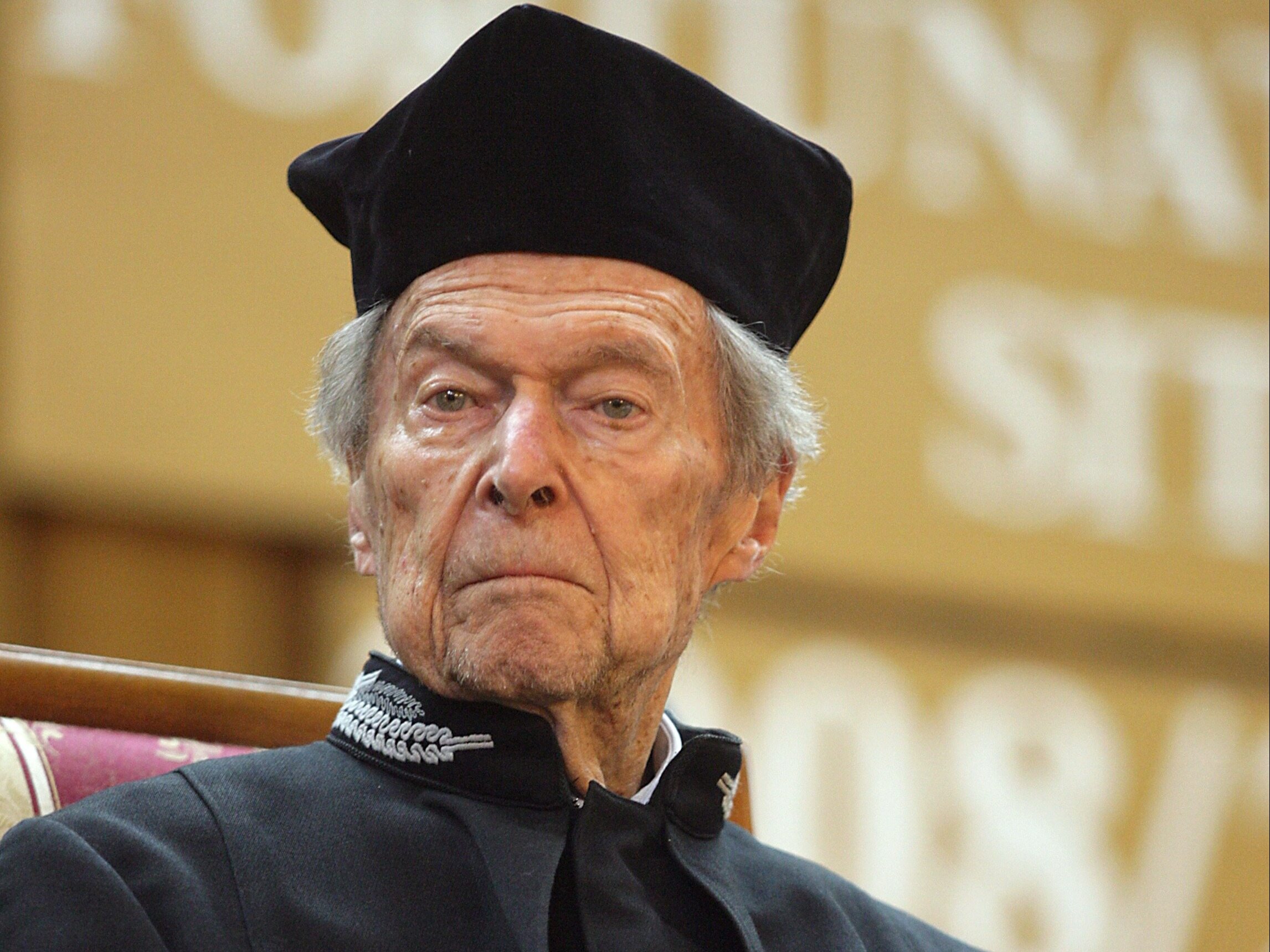Hilary Koprowski discovered a vaccine against a dangerous virus. “It tasted like cod liver oil”

Hilary Koprowski was passionate about music, but he realized that he would not become an outstanding pianist. Although at first it seemed unreal to him, he was completely absorbed in the world of viruses. A scientist from Poland was the first to develop a polio vaccine and saved the lives of thousands, if not millions, of people around the world.
Hilary Koprowski was born on December 5, 1916 in Warsaw. He spent his childhood and teenage years there. He studied at the XI Secondary School for them. Mikołaj Rej. He completed his medical studies at the University of Warsaw a few months before the outbreak of World War II.
Doctor and pianist
Koprowski’s other great passion was music. “I have been taking piano lessons since I was a child. I studied medicine and attended the conservatory. At the same time, an exam in anatomy and Chopin’s etude opus 10 no. 1 – this filled my whole life. My days, weeks and months were so filled with studies, playing the piano and cultural activities that there was no time for anything else,” he recalled in an interview in 1998 for Gazeta Wyborcza.
He left Poland at the beginning of the war – in November 1939, together with his mother and wife. He survived the first months of emigration safely in Italy. “After the fall of Poland, I was of the opinion that from a distance you could serve the country no worse, and maybe even better than being in captivity,” he explained his decision to leave in the aforementioned interview.
Shortly after his arrival, he reported to the Polish consulate, where he began working as a volunteer doctor in the recruitment committee, which faced men enlisting in the Polish army being formed in France.
At that time in Rome, at the Academy of Music of St. Cecylia, Koprowski continued to develop musically. He studied there under the guidance of the outstanding pianist Carlo Zecchi. “At that time, I didn’t know who I would become: a pianist or a doctor,” he told Wyborcza.
A chance encounter on the beach
When, before the declaration of war by Italy in 1940, moods began to change and Poles were warned to leave, the acquaintances gained through musical passion turned out to be helpful. Koprowski and his family received an emigration visa to Brazil in no time at all from the consul of this country in Rome, who was an admirer of classical music.
It was in Rio that Koprowski realized that “he would not be an outstanding pianist”. It was also there that he first encountered vaccines. But the decision to enter the path of a medical career was decided by chance, or maybe by fate. While walking on the beach, Koprowski met an old friend from a Warsaw high school who referred him to an institute funded by the Rockefeller Foundation. “They were doing research on the yellow fever vaccine and the viruses that cause encephalitis. It was then that I first came into contact with the world of viruses. At first, this world seemed unreal to me.
Koprowski, however, quickly became convinced of its reality on his own skin. He and other lab workers had contracted the virus while conducting experiments on the Venezuelan viral brain infection. Fortunately, the disease was mild and after several days he was able to return to work.
At that time, the Pole became fascinated by the large-scale vaccinations against yellow fever carried out in Brazil.
Discoverer of the polio vaccine
At the end of 1944, Koprowski and his family moved to New York. There, he got a job at the pharmaceutical company Lederle, where he worked on a vaccine against Japanese encephalitis, which threatened American soldiers stationed in the Pacific.
It was also a time when the world trembled before polio, known as poliomyelitis or poliomyelitis. Koprowski was the first to develop a vaccine against it. How did it happen? Together with an assistant, they infected a cotton rat, then took a section of its brain and injected it into another rat. After a dozen such procedures, they decided that they had a live, weakened virus that could be used as a vaccine.
The scientists decided to adopt it first. It was 1949. “My co-worker and I swallowed the virus. We knew it didn’t make much sense because we already had the antibodies. But it could turn out, for example, that there is another virus in the rat’s brain that causes a new, unknown disease. We thought it was our duty to get vaccinated at the very beginning,” Koprowski recalled. “I remember that rat brain suspension tasted like cod liver oil,” he recalled those experiences.
On February 27, 1950, the first child was given the vaccine. The test turned out to be successful – antibodies were formed, there were no complications. It was followed by the charges of a center for underdeveloped children in California and infants born to female prisoners in one of the correctional facilities in New Jersey.
In turn, the first vaccination with Koprowski’s preparation on a massive scale and at a dizzying pace was carried out in Congo in 1958. In just six weeks, as many as 250,000 children were vaccinated. This was possible thanks to the fact that the vaccine was administered orally and in, for today’s times, spartan conditions. “On the ground, on a makeshift table, there was a siphon, you pressed one centimeter – straight into the mouth. The solution was slightly salted, because salt was a delicacy for children in Africa” - the scientist reported.
Koprowski’s vaccine has also benefited the Poles. In the 1950s, during the polio epidemic, nine million vaccines arrived by sea from the United States to the Vistula River. The number of cases fell from 1,112 cases in 1959 to about 30 in 1963, and the number of deaths from 111 to two.
Underestimated success
The Pole was not the only scientist working to defeat the virus that causes Heine-Medina disease. Despite unquestionable successes, the preparation approved for use in the USA was not Koprowski’s, but Albert Sabin’s, who started the research three years after the Pole. Koprowski accepted this fact and appreciated the work of his colleague. The disease has been almost completely eradicated.
“Polio has been associated with our species for several thousand years and has led to the death and injury of millions of people. In Poland after the war, it was a nightmare. It is safe to say that Polish children in the 1960s and later were saved thanks to Professor Koprowski’s vaccine, which successfully eradicated this disease in our country, stressed Prof. Marek Niemiałtowski, a microbiologist from the Warsaw University of Life Sciences.
He worked until the end of his life
Koprowski, however, did not rest on his laurels and continued his research work. His scientific achievements are impressive – he published over 850 papers.
For many years he headed the Wistar Institute in Philadelphia. There, too, he bent over rabies. “We managed to grow the virus in a chicken embryo. It turned out that after such treatment, it no longer causes rabies in mice and such a vaccine is certainly suitable for animals. A little later, an attempt to grow the virus in human tissue culture was successful. In this way, we have created a completely new, safe vaccine for humans” – said Koprowski in “Wyborcza”. What’s more, the Koprowski Institute also managed to compose a vaccine against rabies administered to wild animals.
The scientist did not stop there. In 1998, he pointed out that “traditional methods of vaccine production are already archaic” and “new methods must be invented to produce vaccines that are cheap and easier to use.” Of course, his team was already working on them at that time.
Despite being 80, Koprowski did not slow down. “According to the Mexican wizard, I turned 22 years and several hundred months. Today I am busier than ever before. Multiple sclerosis, plant-based vaccines – isn’t it fascinating? he said in an interview.
The virologist until his death headed the Institute of Biotechnology and Advanced Molecular Medicine and the Center for Neurovirology at Thomas Jefferson University in Philadelphia. Nor did he sever ties with his homeland – from 1991 he was a foreign member of the Polish Academy of Sciences.
Congo returned to him years later
In the early 1990s, the story of the Congo came back to Koprowski quite unexpectedly. In Rolling Stone magazine, journalist Tom Curtis made sensational accusations that the cause of the spread of AIDS in Africa, and then around the world, was the Heine-Medina vaccine invented by Koprowski. The journalist accused the scientist that he used materials obtained from chimpanzees for its production, which were supposed to be carriers of the SIV virus, i.e. the “monkey” ancestor of HIV, and that this virus, after getting into humans, was supposed to lead to the creation of HIV. Koprowski proved the allegations to be false, which was later confirmed by other scientists.
Despite so many duties and a dizzying career, Koprowski never gave up playing, and even started composing himself at the age of 80, giving Christmas concerts.
Hilary Koprowski died on April 11, 2013 in Philadelphia at the age of 96. In 2018, on the 100th anniversary of Poland regaining independence, President Andrzej Duda posthumously honored him with the highest state decoration – the Order of the White Eagle.






